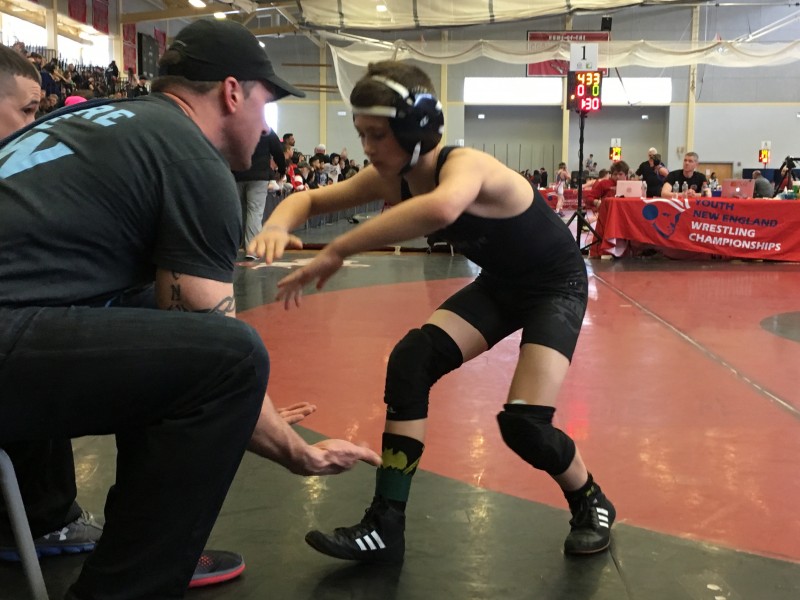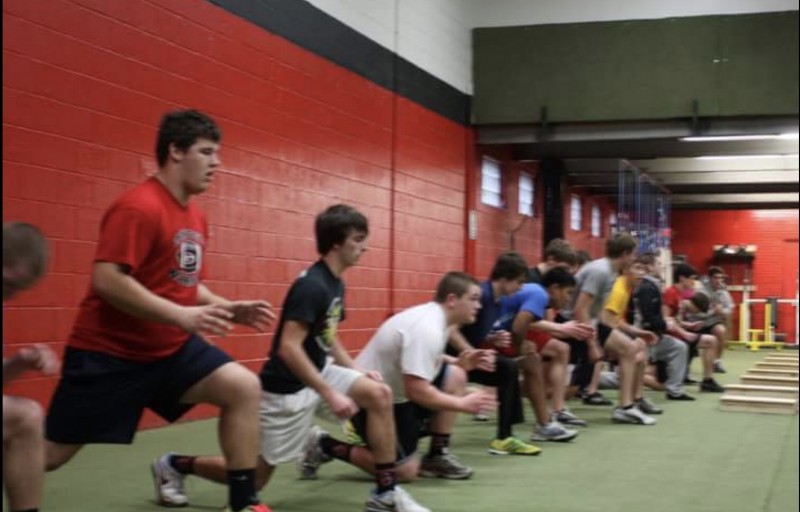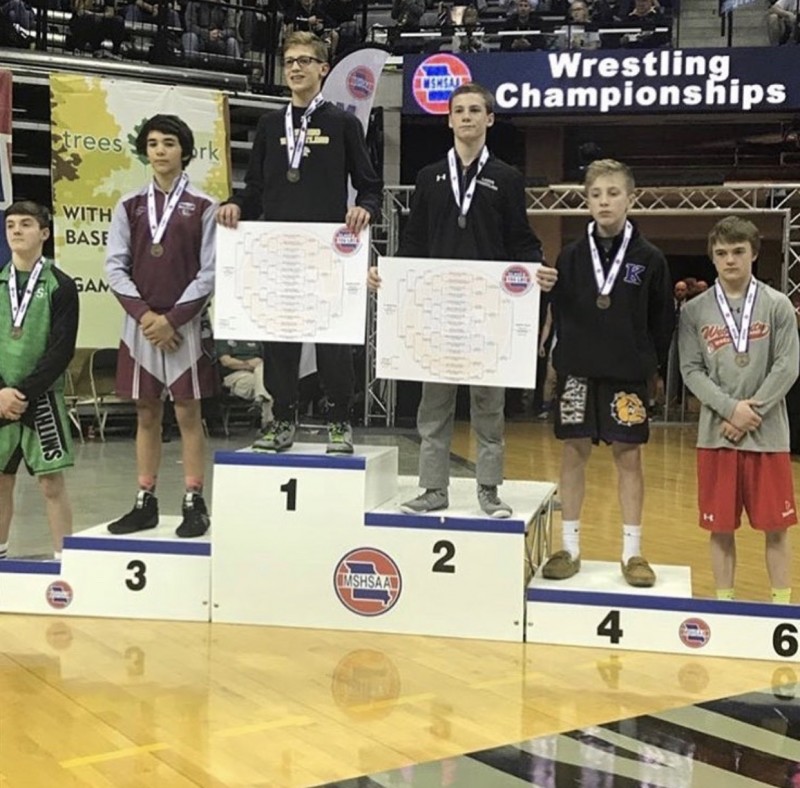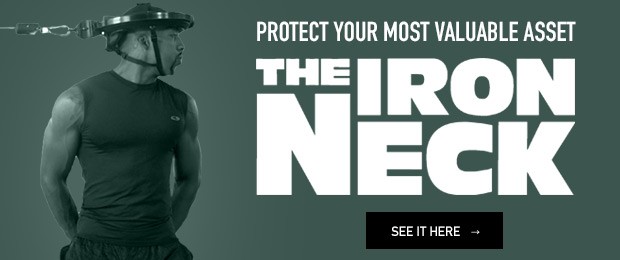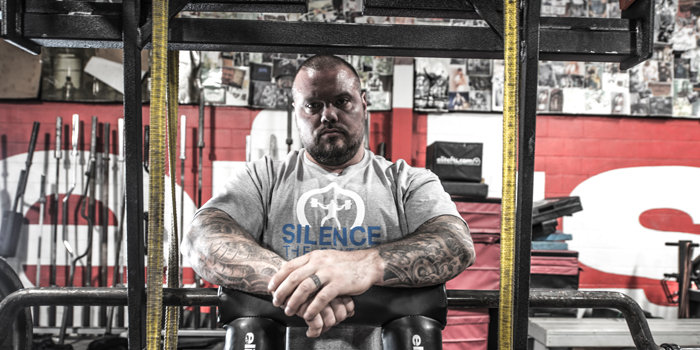
I first met Steve Konopka (fondly referred to as Kono) back in 2007 when we played Arena Football together for the Utah Blaze in Salt Lake City. As we got to know each other on the field, it was actually Kono who suggested that I take my strength training to the next level and begin competing in powerlifting meets. He connected me with Critical Bench as a sponsored athlete — after completing my first meet, I was hooked.
Not only do I feel fortunate to have met Kono, but also to have stayed in touch with him over the past several years as we pursued similar career paths. Passionate about the field of strength and conditioning, both Kono and I opened private training facilities to support athletes in reaching their fitness goals. As I work to serve my clients at Tanks Training Facility in Illinois, Kono works to serve his clients at Strength N Honor Training in Connecticut.
Despite being separated by distance, Kono and I have recently been collaborating on the development of a more detailed, year-round program specifically for wrestlers. Although the sport of wrestling requires unique strength and skill, today’s training programs for wrestlers are not always targeted to meet the needs of these particular athletes. As such, I am excited to share highlights of early discussions that Kono and I have had as we work to turn our shared vision into a reality, helping athletes along in their journeys to become “BAMF” wrestlers.
RECENT: 3 Life Hacks to Manage the Daily Schedule
For me, wrestling was never just a sport. As anyone who has been involved with wrestling understands, it’s also a means to learn valuable life lessons, such as hard work and perseverance through pain. I was a two-time qualifier for All-State Wrestling and a State Place Winner, which opened doors to college wrestling opportunities for me. Although I ultimately chose to pursue college football at the University of Wisconsin rather than continuing on in my wrestling career, I never lost my love of the sport. Today, I train the Granite City High School Wrestling Team, which leads the country with dual meet victories. I’ve also trained numerous State Place winners in both high school and kids club wrestling, in addition to several college athletes.
Kono has strong roots in wrestling as well. He was a two-time All-Conference Winner in wrestling and a two-time State Place Winner. Similarly, he eventually went on to pursue football (first in college, then professionally), but remained connected to the sport of wrestling. Today, this prompts his involvement as a dedicated coach in a number of training programs for young wrestlers, whose success has been evident in recent competitions:
“Now, I help coach and do the strength and conditioning for a private youth club [called] FishEye Wrestling. I also do the strength program for Granby High School Wrestling and work with their football team in the summer for performance training. Just this past season, two of my private training session wrestlers won conference titles as freshmen at Simsbury High School. Ty Finn also won a state title, and Saul Pera topped off his conference title with a 4th-place-finish at states.”
Challenges in Wrestling Today
Needless to say, Kono and I share a life-long passion for wrestling and are committed to its advancement as a sport. However, the more we observed and worked with young wrestlers, the more we identified opportunities for improvement in current training programs. I personally see way too many matches, tournaments, and practices, but not nearly enough wrestlers participating in year-round strength and conditioning programs. All of these aspects are important, but generally, it’s the stronger, more powerful, and better-trained wrestler that comes out on top.
Kono shared that he also sees a lack of proper strength and conditioning in young wrestlers, and at times, even overtraining. He said that on certain occasions, kids may go from winter to spring, to summer, and then to the fall season of wrestling. This means that they are specialized early, so that from one winter to the next they seem like the same athlete. They are the same weight for two or three seasons and still possess the same muscle imbalances and weaknesses. As such, the “top athletes” in the sport simply become those that are genetically predisposed to be stronger.
“The cream of the crop will rise just because they are genetically better than the others, and those athletes typically have parents that stay on top of [their] sleep and nutrition – but that is very rare. Coaches, for the most part, have [their athletes’] best interests at heart, but may not have the resources or knowledge to condition the athletes properly.”
However, Kono acknowledged that some wrestling coaches do resort to overtraining their athletes, pushing them beyond their abilities to yield short-term results. For young wrestlers that are naturally built to handle this kind of physical (and mental) strain, they may improve. But for the majority of athletes who are not, this behavior is often more of a hindrance than a help.
“I will witness other wrestlers from teams that have good technique and coaches gassing out in the second period. At this point, the wrestler is just a wounded duck waiting to get finished off. This can lead to frustration and discourage some of the wrestlers – they basically went to a gunfight with a knife. But on the other hand, I have seen coaches just overtrain the kids and run them to death with no rhyme or reason…Some kids can handle the overtraining because they are genetically and mentally pre-dispositioned for it, but the rest are taking steps backwards.”
Proper Training Frequency
In the face of these challenges, Kono and I set out to discuss how to improve wrestling training programs. One of the first aspects to consider was proper training frequency. How often should a wrestler train? In my opinion, most athletes can get by with a 45-60-minute workout. The amount of days, however, depends on the time of year. If it is off-season and the athlete does not have any big competitions coming up, then 4-5 days per week would be fine. During the season, however, 1-2 days per week would be sufficient.
Kono noted that training frequency for wrestlers can really vary depending on the individual. He’s seen some intense athletes that train every day and have to be pulled back a little by their coaches. Elite athletes that are chasing titles – and that have the proper nutrition, supplementation, and sleep – will do four hard sessions per week. For the average athlete, however, Kono reported that the frequency is slightly less:
“[For] our regular athletes, we try to make sure they get 3-4 sessions each week with some homework. Young wrestlers in [the] off-season do two good, full-body sessions to keep them healthy and strong. In-season high school wrestlers: we have had great success with a Monday/Thursday split and, depending on the wrestler (weight, health, experience), a brief, full-body Sunday workout.”
Squat, Bench Press, and Deadlift
With elitefts’ roots being in powerlifting, it is interesting to consider the application of the “big three” — squat, bench press, and deadlift — in a wrestling strength and conditioning program. If I personally had to rank them, I would have deadlift as number one, squat as number two, and bench press as number three. Deadlift is one of my go-to lifts for most athletes, as there are numerous progressions and varieties that they can execute. Although it is said that deadlifts can be hard on athletes’ backs, that is true for any lift that is coached improperly.
Kono agreed with this ranking, noting that deadlift and its associated variations have the greatest carry-over to the sport of wrestling in particular.
“If you factor in the angles, positions, and muscle groups that work in synergy…the deadlift was made for wrestlers. Squat would be second in importance, followed by bench. [For] in-season wrestlers, I tend to stay away from straight barbell bench, and utilize dumbbells and floor presses to try and save the shoulders. In the off-season, bench press plays a major role in increasing upper body pressing power.”
In-Season Vs. Off-Season Training
When it comes to a comprehensive year-round training program for wrestlers, it is important to note that there are some key differences between in-season and off-season training. In the off-season, it is more about improving overall strength and power; conditioning takes a back seat but is not eliminated. There is also less of a focus on weight — athletes should not stop eating healthy and taking care of themselves, but adding a few pounds at this time is fine. Kono agreed, stating that “off-season training is for increasing strength and performance”:
“Going over weaknesses or issues from the previous season and setting next season’s goal, in my opinion, is where you start and program from there. Off-season after the recovery phase – the main goal is [to] increase performance and everything takes a back seat to that. So, workloads and volume will be much greater than in-season. The other fun thing is [that] you can get creative with different exercises and incorporate different circuits to find those weaknesses that only come out when the athlete is really taxed.”
On the other hand, in-season training involves more maintenance work to preserve what was built during the off-season. Athletes have to work around matches and tournaments, and as a result, even a 20-minute training session will suffice. In-season reps are comparatively lower, as mat time is the main source of muscle endurance and conditioning. As Kono shared, athletes should also incorporate longer rest periods — sometimes up to five minutes between compound movements — for full recovery. He also tries to avoid implementing new exercises while in-season, because he feels that it heightens the demand on the CNS, which could increase the risk of injury.
“I always cringe when I see wrestling coaches [that], two weeks before the State Tournament, add crazy conditioning drills that are longer than normal or totally new. If your wrestler wasn’t in shape two weeks before [the State Tournament], you failed to plan from day one and you may get them hurt right before the most important part of the year.”
Although some may disagree with him, Kono’s approach has proven to be successful. The last couple of years that athletes have personally trained with him in a year-round capacity, the majority maintained their pre-season maximums — 88% in 2017 and 91% in 2018. Additionally, all of these athletes ended up exceeding their previous year’s record, receiving conference and state placings in reward for their hard work.
Expert Tips and Tricks
In terms of tips for getting ahead, both Kono and I recognize the importance and effectiveness of grip strength builders. For me, the classic “rice bucket” is one of the best grip strength builders, despite the fact that its rarely seen or used. I’m also a huge proponent of resistance training at short distances for off-season conditioning and muscle endurance. As Kono stated:
“One thing in-season is [that] we really smash the grip strength. The wrestlers lose some strength in the big lifts, but keeping or increasing their grip strength — especially with weight class athletes — is big.”
There are also a few expert tips from a nutrition standpoint that can make a difference in an athlete’s performance. In general, protein should be a core part of an athlete’s diet, while fried foods and carbohydrates should be avoided. As Kono summed it up, it’s all about whole foods.
He encourages athletes to eat organic mixed greens to obtain the necessary micronutrients for recovery and immune support. He also recommends a whey isolate post-practice, or at bedtime with water. For wrestlers that are cutting weight, BCAA’s heavy with Leucine and electrolytes can be beneficial. As with any nutritional decisions, however, Kono stressed the importance of involving and educating parents of young athletes.
“I really like hammering home whole foods…and you have to hammer it to the parents first. The kids have a real tough time if the parents do not have at least a little bit of knowledge. Making sure the athletes are re-fueling post-practice I think is one of the biggest things…Nutrition can be talked about forever…but getting the athletes and parents some basic information can really help.”
Supplements are also something that I personally love to incorporate into an athlete’s training program in order to fill nutritional gaps. Creatine is a supplement that is generally considered to be a safe option, although it should be avoided if an athlete is looking to cut weight. I do recommend that all athletes avoid pre-workout supplements, however, which are generally horrible for the body. Along those lines, I always recommend careful research when considering adding any kind of supplement to an athlete’s routine.
Weight Cuts in Wrestling
I often receive questions about whether or not wrestlers who have to cut weight should train differently than those who do not. I want to emphasize that when it comes to major weight cuts in the sport of wrestling, both Kono and I are not huge fans. A few pounds here and there is fine, but excessive weight loss can have harmful effects on the body (particularly for younger athletes). That being said, a general rule of thumb is to keep the same movements and just lessen the load for athletes who are trying to cut weight.
In our discussion, Kono added that healthy eating, hydration, and proper nutrition is a much safer approach to weight loss for young athletes. Otherwise, his advice was similar — cut back the volume and increase rest periods during training.
“Getting the parents involved with the nutrition plan is the key. Next, we start with cutting back the volume and increase rest periods in between sets. [In] some circumstances, just one or two exercises for the workout in total.”
Letting Kids Be Kids
When considering whether or not a young athlete should specialize in a single sport — such as wrestling — both Kono and I are of the opinion that parents should just “let kids be kids.” When athletes are young, they should have the opportunity to have fun trying out as many sports as they want. As athletes grow older, they can make more informed decisions as to what sports are best for them; at that point in time, more specialization is fine. However, parents and coaches must be careful to avoid potential issues that come with excessive specialization when an athlete is at a young age. As Kono stated:
“I have seen specialization lead to overuse injuries, and I see it now with kids in 7th and 8th grade having shoulder injuries or tendonitis in their knees — it’s crazy. Once they are finishing sophomore year in high school, you will know athletically if your kid is going to go anywhere for a sport or not. There are some late bloomers, but you definitely have a good idea if Penn State is going to be calling anytime soon. If there is a sport they absolutely love, let them play it…[but] for the general population, get them to do whatever you can and get them functionally stronger.”
Year-Round Mindset
The journey to become a “BAMF” wrestler is not a single-season endeavor. Dedicated athletes should be in a year-round mindset, and their training program should match. Kono and I encourage wrestlers (and coaches) to be more intentional with their training programs so that strength and conditioning work is impactful — not intermittent. As Kono put it, “it should be demanding, but designed with performance in mind.”










